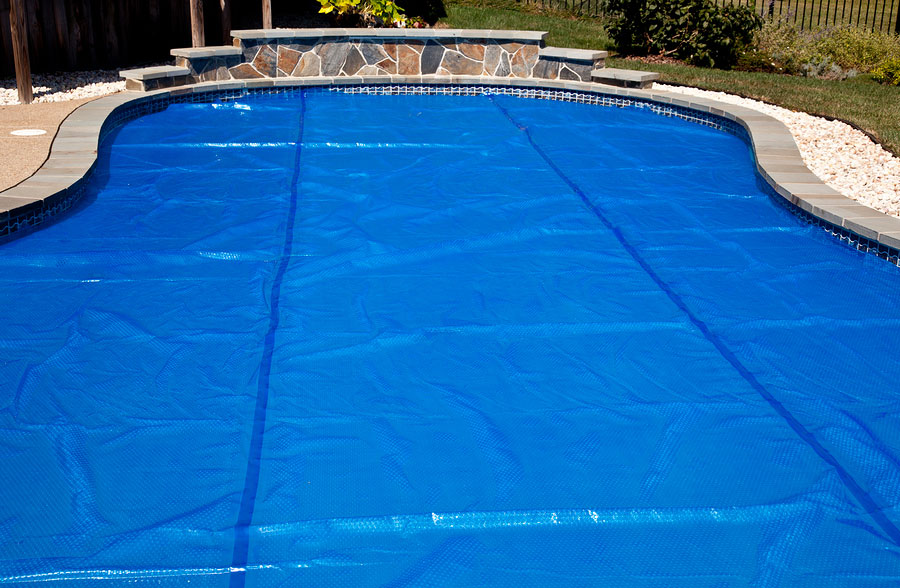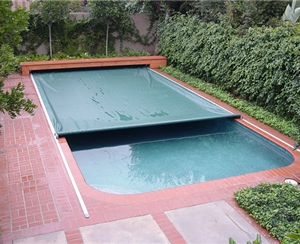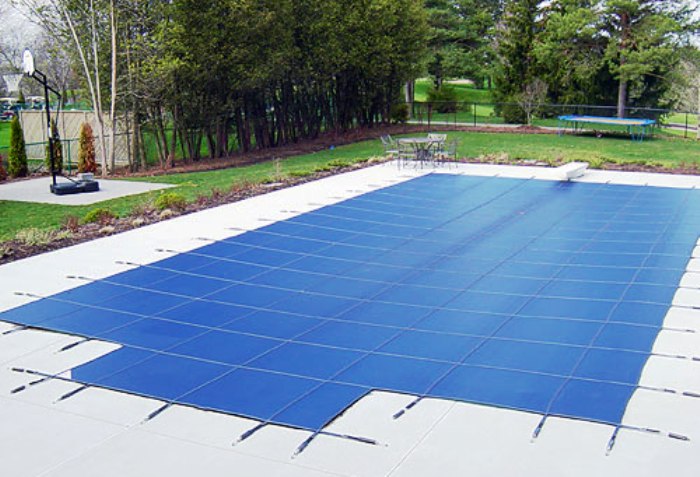The best time to think about a pool cover is, as you might expect, at the time you install the pool itself. However, if you are considering a cover for an existing pool, you still have a number of options.
visit our pool covers services page
so what kind of cover should you get?
First, consider what a pool blanket can do for you. Pool covers share several things in common. They all:
- Some but not all heat your pool’s water – more on that below
- Reduce evaporation of your pool’s water
- Keep out dirt, debris and leaves that interfere with the pumps and sanitary conditions of the water
- Cut your cleaning time in half
- Dramatically decrease your monthly bills by saving money on heating, water and chemicals needed to maintain your pool
With so many options, how do you choose?
The different kinds of swimming pool covers each have their unique qualities. The key is learning what each one does in order to decide which one to buy. Below, we compare five of the different types to help you make this decision.
SOLAR POOL COVERS

Solar swimming pool covers, or bubble covers, are perhaps the least expensive of all the options. During the day, the blanket absorbs the sun’s warmth and helps keep this warmth from escaping during night’s cooler temperatures. Some blankets reduce evaporation by 99% and cut down on pool heating costs by up to 75%.
They are made of a light durable material, and consist of air bubbles, not unlike bubble wrap. Light passes easily through these transparent bubbles to help facilitate heating in the same way that a magnifying glass works. Depending on the size of the pool, the price for a solar pool cover ranges from $40 (kiddie pool size) to $1,400.
Installation is easy and can be done with a pair of household scissors. The bubbles go face down on the water and then is cut to fit the shape of the pool.
AUTOMATIC POOL COVERS
 Automatic pool covers can alleviate safety concerns and are extremely easy to use. As implied by their name, auto pool covers automatically open and close at the push of a button. They are far easier to operate and more secure than the other kinds of covers.
Automatic pool covers can alleviate safety concerns and are extremely easy to use. As implied by their name, auto pool covers automatically open and close at the push of a button. They are far easier to operate and more secure than the other kinds of covers.
They do come with a hefty price tag but the benefits far outweigh the costs. Many people say the extra money is worth the piece of mind, not to mention, it’s pretty cool to be able to push a button and have it open and close on command.
Auto covers are made of interlocking slats that rest on the surface of the water, and can support the full weight of an adult. A reel operates the slats, automatically covering and uncovering the pool at the push of a button. It can also be locked to prevent young hands from inadvertently opening and closing the cover.
The covers are custom-fit to the measurements of the pool. There are two methods for installation. The first method anchors the pool cover to the ground using snap-down anchors. The second is installing a track. The two tracks need to run parallel to each other to ensure the auto cover can slide through unimpeded.
Automatic pool covers require a professional to install. When installed properly, it is impossible for anyone to fall into the water.
As mentioned above, they are pricey, and start at about $2500 and go much higher.
THERMAL POOL COVERS
 Thermal pool covers are perhaps one of the best kinds of pool blankets. They block the sun’s ray, keeping damaging algae from growing. They also retain heat better than solar covers.
Thermal pool covers are perhaps one of the best kinds of pool blankets. They block the sun’s ray, keeping damaging algae from growing. They also retain heat better than solar covers.
Thermal blankets are made of an insulating foam material, and though they cost a bit more than bubble covers, roughly $900-$3000 range, they do insulate better than solar covers.
Installation is normally done by a professional. The cover can fit just about any pool shape too.
WINTER POOL COVERS

For the most part, customers who buy winter pool covers are closing their pool for the winter season, however winter covers can be used year-round.
Made from a polyethylene fabric, these covers keep out winter winds, precipitation and extreme temperatures that can cause frost damage. They are relatively inexpensive, ranging in price from $150 – $700 and prevent a nasty cleanup in the spring by keeping out dirt, leaves and other debris.
Installation is relatively easy. The covers are sewn at the factory and come in their final shape and size. They are designed to overlap the sides of the pool to aid in keeping out dirt and debris, and is further sealed at a fixed point approximately every 800mm.
Anchor points around the pool must be installed for the cover.
